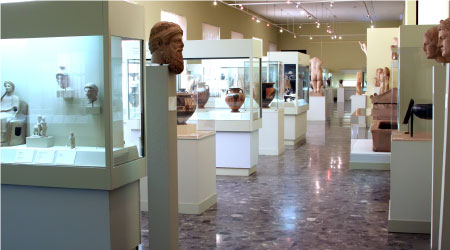Storage Woes: Museums Facing Many Challenges
Lack of space and deteriorating building conditions can threaten historical documents, artifacts. Here are some tips on avoiding the worst.
By Dave Lubach, managing editor
The worst time to address a problem in facilities management is after a problem occurs. Unfortunately for museum managers, when something goes wrong, it can result in the loss of historical artifacts that help tell the history of a city, country, or even the world.
“It’s a museum’s worst fear that a disaster could happen that damages or destroys even the smallest portion of their collections,” says Bruce Davis, an architect and partner at the firm Cooper Robertson, where he leads museum planning and programming projects. “But disasters are unfortunately often the wake-up call to acknowledge the importance of tackling collection risks.”
Davis and a colleague are the authors of a recent white paper outlining why museums need to take storage at their facilities more seriously. The white paper addresses the issue and provides solutions to resolve the problems that can arise from situations like flooding or fires.
A recent New York Times article described the threat that climate change poses to the Smithsonian museums in Washington D.C. The National Mall, where many of the museums are located, was once a marsh. Over time, the land could eventually submerge into water and threaten the museums’ basements where millions of historical documents and items are stored.
The Times article said the American History Museum is already experiencing water issues in its basement. Staffers are using flood barriers to hold off water and prevent sensor alarms from going off. Flooding issues can also damage electrical and mechanical units, and high humidity levels could also place valuable items at risk.
“Museums may not have been designed for these conditions and can struggle to perform as expected,” Davis says. “Other challenges include HVAC equipment that may be near or beyond its normal lifespan, building envelopes that may fail to maintain a stable interior environment, and collection storage that may have been located in spaces which, at the time they were planned and designed, were not subject to flooding, but now are.”
Natural disasters are not the only worries for museum facility managers, who are also faced with challenges such as overcrowded storage areas and pest management issues. These overlooked concerns often fall in priority behind the public-facing spaces of a museum which will receive the bulk of the attention from maintenance managers and their staff.
“Almost all museums store much more of their collection than they can exhibit, making the planning and design of spaces to store and preserve collections a challenge that most institutions will face,” Davis says. “One potential solution is the use of visible storage as a way to show more of a museum’s collection and provide another form of visitor engagement.”
Davis says visible engagement is a growing trend in the museum world.
“A growing number of institutions are looking into visible storage opportunities,” he says. “Visible storage is often arranged in dense displays behind glazing to maintain proper conditions for the objects, and it also has the benefit of giving the public a better sense of the typically unknown breadth and depth of the collection beyond gallery and exhibition spaces. Recently, some museums have designed entire collection storage facilities that offer nearly full access to the public.”
As is typically the case with publicly-owned facilities, it’s often an uphill battle to find funding to complete projects. In some cases, the museums are fortunate, such as in Milwaukee, where about two-thirds funding of a $240 million project to relocate the county museum has been secured, with a planned 2026 opening.
Davis offers a number of suggestions for managers hoping to convince stakeholders to fund such projects.
- “Conduct a storage assessment with professionals who, with museum staff, can evaluate current storage conditions and project space and environmental needs to safely accommodate collection growth,” he says.
- “Identify whether the building envelope and mechanical systems can maintain the proper storage environments under changing climate scenarios, identify equipment reaching or exceeding its operational life, and evaluate the condition of enclosing walls and roofs.
- “Include architects, engineers, exterior wall and roof consultants as well as museum conservators and curators. Have a cost estimator budget the projects and plan their implementation and phasing.
- “Consider offsite storage that could be more cost-effective than building onsite, giving priority to public-facing programs. Consider including collection viewing, study, and research spaces along with the offsite storage to reduce costs and risks of transporting objects to and from the main museum.
- “Be sure that remediation costs are included in capital project budgets and educate board members who may not be aware of the risks in postponing or minimizing work.
- Finally, “It’s worth mentioning that upgraded storage spaces appeal to donors, who want to be confident that their collections will be stored safely.”
If new locations or additional funding simply isn’t in the cards, a strong preventive maintenance plan can go a long way in preserving artifacts and keeping them safe.
“Follow equipment maintenance and replacement schedules so that minor issues don’t become major ones,” Davis says. “Be sure the collection is stored properly – including attention to storage furniture and fixtures, temperatures, humidity, particulate control, lighting and fire protection – which reduces risks to the art and artifacts and maximizes their accessibility.”
Dave Lubach is managing editor for the facilities market. He has seven years of experience covering facilities management and maintenance.
Related Topics:












